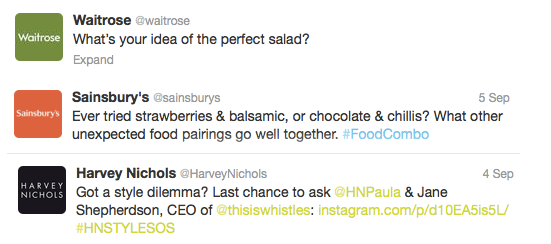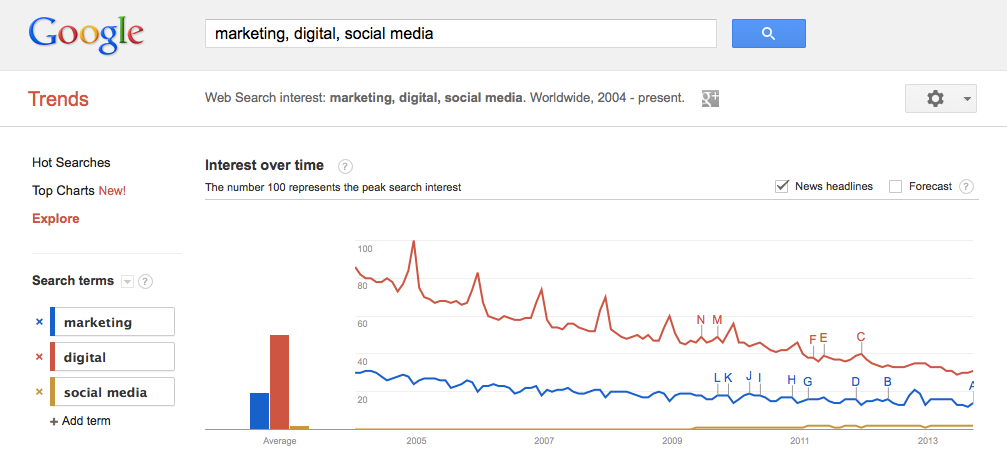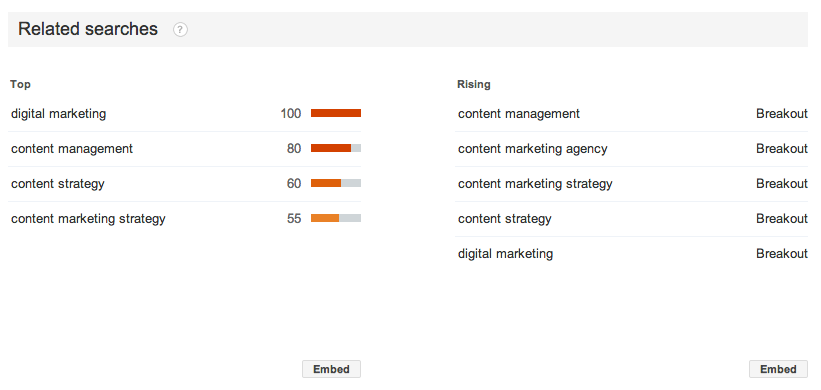How to generate ideas for blog posts
Generating content ideas to slot into your editorial calendar is not easy.
Whether you are just starting out or if you are writing for an already established blog, generating new ideas can seem the trickiest task.
The good news is that you don’t actually have to look very far as there are almost limitless ideas right under your nose.
In this post, I am going to show you how to find blog post ideas.
1. Always be ready for a good idea
There is nothing worse than having a sudden spark of inspiration for your next blog post, only to have forgotten it by the time you next sit down at your computer.
If you’re committed to being a publisher or a blogger, you need to be ready to record your ideas, especially when you least expect them.
There is almost nothing better than using a simple pen and notebook combo, but if you are clinging to modern technology you can use Evernote, online note taking software (with offline notebooks too for when your connection isn’t so great), or an alternative such as Google Drive.
You should also get into the routine of collecting your ideas somewhere and organising them, into categories for example.
The above tools are capable of that, but you might like to transfer them to a spreadsheet or attach them to your editorial calendar so that they’re organised better for when you need them.
2. Listen to what people are saying
There is no better place to find out what is happening and what people are talking about than social media, and this method is my own favourite for content marketing blog post ideas.
By exploring comments and conversations on networks such as Facebook, Twitter, Instagram, and Pinterest, I can glean insights into what subjects ‘real’ people are thinking about, not just the writers and editors for big publishing websites.
Simply spend a moment to explore your favourite networks, ideally over a biscuit and a cup of tea, and record anything interesting or thought-provoking in your feeds.
Facebook has more to offer than you might think. Follow your favourite brands and publishers to start receiving updates from them in your news feed.
TIP: If you hover over the “Liked” button on a brand’s page, you can set options for how many updates you get from that page, and whether you’d like to receive notifications if they’re unmissable (<cough>like ours</cough>).

You might be unaware that you can follow not just businesses but specific groups as well. Joining them will give you access to discussions with others in the industry, providing you with insights you might not get elsewhere. You can also connect and converse with others and even ask for help or feedback if you’re getting stuck with ideas.

Do you struggle with finding an eye-catching image to use with your post and to promote it on social media? Often, you find yourself with a great story, but get stuck with the visuals.
While you don’t need an image for everything you write, many blogs require you to have one, and a good image can help your post get a good click-through rate and increase its popularity. This is one of the reasons it’s good to plan your posts ahead of time, because it gives you enough time to work out something good to go with your writing.
Pinterest is a great network for visuals, obviously, and can be a source of inspiration for what you can do with your accompanying image.
Also don’t forget to search for Creative Commons licensed images too if you don’t fancy creating your own from scratch; remember, you can’t just use someone else’s image without the proper permission, but you can if it’s licensed Creative Commons, provided you link back to the source.
3. Look to online curated newspapers/magazines

You would be forgiven for finding these tools slightly annoying, especially when they flood your social media feed, but Scoop.it, Paper.li, and Flipboard can be a good source of content you’re not already aware of. If you come across one you like, find out more about who the creator is and subscribe to get updates whenever a new one is published. For example, SNOW architects Daily is a paper.li created by Dave Cornett that is a really good source of content from around the world of architecture.
4. Ask your own questions
There isn’t any better way of finding out people’s opinions than by asking them a question. Not only will this engage your audience, it’ll be a source of ideas for new content, products, and campaigns.

You can also use Quora, a website that lets you ask and answer questions, to find out what people want to learn more about, and to discover something new yourself.
5. Don’t miss out on another blog post
When Google closed Google Reader, did they do so out of anticipation that the RSS reader was going away?
For us, and for millions of people who read posts online on a regular basis, the RSS reader is essential for always getting the newest content delivered on time. Luckily, there are a number of great alternatives to Google Reader, with Feedly being an office favourite. This blog post goes through some of the other options if Feedly isn’t for you.
6. Look to more visual forms of content
We love the art of showing content visually, and video is one of the most engaging but sadly underused (used well, that is) mediums there is. Spend some time on YouTube, Vimeo, or even and Instagram, and you’re sure to find something that sparks an idea.
It’s a good idea to treat video sites like YouTube and Vimeo as second search engines as you’ll often find one of the many hidden gems that can serve as inspiration, or as media to enrich a blog post you’re already writing.
7. Find ideas hidden in comments
There is more to a blog post than just the blog post itself. Read the comments it received and search for it on social media.
You’ll find extra opinions, further questions, and insightful chatter that will inspire more blog posts.

8. Spend some time reading
All of the information we receive tends to be bite-size chunks these days, and in this digital age we often forget about the beauty of reading a book or printed publication.
You can make your lunch break more interesting with an industry related magazine or while waiting for the bus you can flip a few pages of an interesting book, and you’ll fuel your writing strategy.
For example, our office has been hooked on a book called “Manage Your Day-to-Day: Build Your Routine, Find Your Focus, and Sharpen Your Creative Mind“, featuring contributions from twenty different thinkers in creativity and entrepeneurship.
It has given us all inspiration for everything from blog posts to the way we work everyday. It’s something you don’t always get from blog posts so we shouldn’t forget about the printed book! Or eBooks at least.
9. Google Trends
This versatile search tool will help you to explore the topics the world is searching for. You can sort them according to types of searches like web, image, news, products, or YouTube, and compare up to five of them at a time.

Perhaps even more usefully, you can see the top and rising related searches to your original search term, which can provide insights into what you should write next, or what keywords you should consider optimising for in your next post.

Here are some other quick blog post ideas:
10. Use Google Alerts
11. Conduct an interview
12. Join a blogging club or group
13. Attend an event
14. Join a networking circle
15. Set up a debate
16. Check FAQs
17. Use Google AdWords Keyword Planner (have to get used to calling it that)
18. Invite guest bloggers
How do you find ideas for your blog posts? Please share with us what works for you, and how you keep your content calendar full of ideas.
By Kasia Piekut
About markmaking*
markmaking*
mark-making* is an award-winning creative agency specialising in branding, campaigns and communications